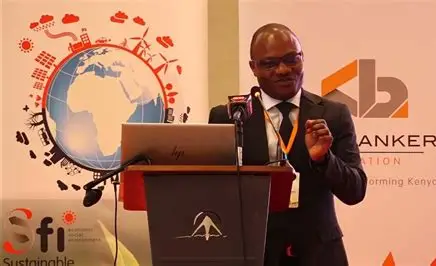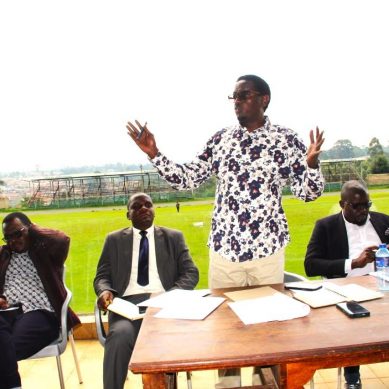
Kenya unveils 2025 medium-term public debt management strategy that stands at $85 billion
Kenyan has launched its 2025 Medium-Term Debt Strategy (MTDS), which outlines measures the government is taking to minimise the cost and risks of public debt, while ensuring sustainability over the next three years.
Speaking during the unveiling in Nairobi, the National Treasury and Economic Planning Cabinet Secretary John Mbadi said prudent debt management against a backdrop economic uncertainties and shifting global financial dynamics was key to economic rebound.
According to the cabinet secretary, the strategy, which covers the period between 2025 and 2028, seeks to gradually reduce the stock of treasury bills while lengthening the maturity of public debt instruments. It also prioritises deepening of the domestic debt market and securing a balanced mix of concessional and commercial external financing.
Mbadi disclosed that as of March 2025, Kenya’s total public debt stood at Ksh11.02 trillion ($85.030 billion) from Ksh10.5 trillion ($81.018 billion) in June 2024.
“This represents 65.7 per cent of the country’s gross domestic product (GDP). Of this, Ksh5.9 trillion ($45.678 billion) is domestic debt, while Ksh5.09 trillion ($39-274 billion) is external debt,” noted Mbadi.
The CS further highlighted that multilateral lenders, including the World Bank, account for 53.9 per cent of the external debt, while bilateral and commercial lenders hold 21.4 per cent and 24.7 per cent, respectively.
He added that government-guaranteed debt for state corporations such as the Kenya Ports Authority (KPA), Kenya Electricity Generating Company (KenGen) and Kenya Airways stands at Ksh100 billion ($771.600 million).
“The strategy recognises that a diversified public debt structure and a deepening of the domestic debt market are necessary to mitigate exchange rate risks. For instance, by January 2024, our external debt stock was Ksh6 trillion ($46.296 billion), but today it is Ksh5 trillion ($38.580 billion) not because we have repaid loans, but due to exchange rate fluctuations,” Mbadi explained.
The CS disclosed that the present value of public debt stands at 63 per cent of GDP, exceeding the legal threshold of 55 per cent stating that the government has until November 2029 to bring this ratio within the required limit.
To address this, he said that the 2025 MTDS targets a borrowing mix of 25 per cent from external sources and 75 per cent from domestic markets, with the plan aiming to reduce the debt-to-GDP ratio from 63.7 per cent to 57.8 per cent and lower the present value of debt to GDP from 58.1 per cent to 52.8 per cent by 2028.
“The government will implement the strategy through an annual borrowing plan, with cost and risk assessments conducted semi-annually to evaluate performance and make necessary adjustments,” announced Mbadi.
Further, the CS acknowledged challenges in Kenya’s public debt landscape, including sovereign credit rating downgrades that have led to higher borrowing costs and reduced investor confidence.
Other challenges include, global financial market volatility and rising interest rates, which have also made debt management more complex.
“The high-interest rate environment has led to increased debt servicing costs. However, as macroeconomic conditions improve, we expect an easing of monetary policy, which should help lower interest rates,” he implored.
In response to shrinking external financing, the CS hinted that Treasury plans to focus on strengthening the domestic debt market through medium-to long-term debt securities and policy reforms, while also aiming to boost exports and foreign exchange reserves to enhance external debt sustainability.
Echoing the CS’s remarks, the National Treasury Principal Secretary Dr Chris Kiptoo posited that, if the country balances its budget, where revenues actually meet all the expenditure needs, then Kenya does not need to borrow.
“When we look at the history of Kenya, we have not been in that space where we have had a balanced budget,” observed the PS, further revealing that they are in the space of discussing on the revenue side, how much to raise revenues while also containing expenditures.
Institute of Public Finance Chief Executive Officer, James Muraguri urged Kenyans to not only be informed about debt policies, but also actively engage in shaping them adding that debt strategies reflect the voices and concerns of the people.
The 2025 Medium-Term Debt Strategy lays out a roadmap for managing Kenya’s debt while ensuring economic stability.
With a focus on reducing costs, minimising risks and enhancing domestic market participation, Treasury aims to navigate the country’s debt challenges and foster long-term financial sustainability.
Going forward, the government says the success of the strategy will depend on disciplined implementation, continuous market engagement, and a favourable economic environment.
National Treasury and Economic Planning Cabinet Secretary John Mbadi, giving his remarks during Kenya’s Dissemination of 2025 Medium Term Debt Strategy at a Nairobi hotel in Nairobi on Wednesday March 26th, 2025
- A Tell Media / KNA report / By Emmanuel Mbuthia








